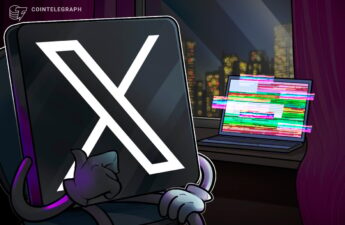In the last decade, we have witnessed an ever-increasing explosion of Web3 projects building decentralized versions of Web2 platforms and services. Compound is building the Web3 version of Bank of America, Uniswap is NYSE, Yearn Finance is the decentralized Blackrock, and so on.
In theory, the 9,000-plus Web3 projects in existence today promise to be open-source, permissionless, and supported by token economies. Yet while many new Web3 projects label themselves as decentralized networks, protocols, DAOs, and dapps, most are actually businesses with products that will fail to grow if they don’t start thinking of themselves as such.
Ideology does not sell long term, and assigning terms like “protocol” and “DAO” doesn’t remove the requirement to develop and scale a product that people actually want to use. And indeed, in the case of Web3 projects, their products should be an order of magnitude better than their centralized counterparts to make up for the significant UX friction of using a product with a crypto backend.
But this still leaves the question about how to measure success. Until recently, Web3 projects have primarily been judged by two metrics: price and market cap—call it “value by speculation” if you like. And as we know from history, this is not a great proxy for long term success.
Here are some truly useful Web3-native growth metrics as they apply to three major categories: DeFi, Layer 1s/Layer 2s, and Play-to-Earn Gaming.
DeFi: Value growth through financial inflows, integrations
Decentralized finance (DeFi) applications include decentralized exchanges like Uniswap and lending platforms like Compound. Most DeFi projects are developed by a centralized development team that then seeks to distribute management of its operations to a decentralized community of token holders. Key growth metrics:
Total Value Locked — TVL has been the OG success metric for DeFi apps since inception. It represents the overall value of crypto assets deposited in a DeFi protocol for things like trading, staking, and lending. While TVL is a great metric for borrowing/lending protocols like Aave and Compound, it’s less useful for decentralized exchanges like Uniswap that measure growth primarily by trading volume. One downside to using TVL to measure long-term growth is that users and traders often jump from one DeFi app to another in search of higher yield, and a few whales can create the illusion of activity, making TVL not a very sticky usage metric. It is, however, a great metric for confidence. Assets locked have tangible value and bear an opportunity cost of other productive uses.
Active Wallets — While traditional marketplaces measure Daily Active Users (DAU) and Monthly Active Users (MAU), in DeFi users simply connect their wallet and begin buying, selling, and staking. The analog measurement for DAU and MAU in DeFi would be Daily Active Wallets and Monthly Active Wallets.
Number Of Integrations — Since DeFi apps are composable, or able to interact with and build on other DeFi apps, another growth metric is the number and quality of integrations where the app is used in other wallets, exchanges, and DeFi products. Developer activity is key to attaining project growth and market leadership in DeFi.
Layer 1s and Layers 2s: Growth through developer activity
Layer 1 refers to the base level blockchains that define projects like Ethereum, Solana, Near, Avalanche, and Flow. (Layer 2 projects, such as Polygon, sit atop existing Layer 1s in order to provide scaling). Growth for these projects comes primarily from applications built on top of these protocols. Key metrics:
Number of Developers and Applications — Given that Layer 1 and Layer 2 projects are open-source, anyone can build on top of them and integrate with them. The number of developers and the number of applications built on top of a given protocol are perhaps the most important growth metrics for L1/L2 projects. A good way to quantify the number of developers contributing to a project would be to look at the number of active users in developer environments and libraries like Github. The more traction that the spinoff apps gain from both users and investors, the more growth there is for the base project. The Flow blockchain, for example, went from having 50 apps on its network in December 2020 to 650 apps by the end of 2021. The projects building on Flow raised over $700M in funding last year, and contributed to the transaction growth and user adoption of the Flow blockchain.
Number Of Active Wallets — Most L1/L2 projects have their own crypto wallets that allow users to buy, sell, trade, stake, and interact with decentralized applications (dapps) built on top of their infrastructure. As was the case in DeFi, the number of Daily Active Wallets (DAW) and Monthly Active Wallets (MAW) is a key growth metric. Third-party wallets like Metamask (Ethereum), Blocto (Flow), and Phantom (Solana) often become major hubs for users’ assets from within that protocol’s ecosystem.
Total Number and Size Of Transactions — The number of transactions, the number of large transactions (over $100,000), and transaction volume on a given protocol is a good measure of a network’s use as a means of exchange (though this is not necessarily the end goal of many projects). Dollar share of total transaction volume can also be used to measure market share versus competitors.
Play To Earn Gaming: Growth through partnerships, player incentives
Play-to-earn (P2E) games are video games where the player can receive rewards with real-world value. Unlike in regular video games, where in-game items are held on private data networks and owned by the game creators, NFTs enable players to own the unique assets that they purchase. In addition, once a player owns an in-game asset NFT, they can freely sell it outside of the platform where it was created, something not possible with regular games. Players also have a say in the governance of the game itself. While we have yet to see a sustainable model for crypto gaming that we can use as a blueprint for success, here are useful three metrics to assess P2E projects:
Number Of Active Players — The number of daily (or monthly) active users is the key measure of a game’s growth and popularity. While content richness of the game is critical to success, a content-rich game with few users will become worthless. Equally important is a project’s ability to retain its number of active players. On Axie Infinity, for example, built on the Ronin chain, the average number of daily users has dropped from 120,000 to about 20,000 over the last six months while in-game currency SLP earnings fell.
Transaction Volume Per User — This metric refers to the average amount of funds transferred per player, which reflects both the level of user engagement and the soundness of token design. Growing average transaction volume per user is also key to growing revenue. When evaluating projects, look for stability and growth in average transaction volume per user.
Number (And Quality) Of Guild Partnerships — In Web3 gaming, growth and distribution is usually achieved through player referrals and partnerships with guilds. A crypto gaming guild is a group of gamers that play together, share data and in-game assets, and support other gamers. Guilds such as Yield Guild Games, Ancient8, Good Games Guild, and Merit Circle allow new players to start playing a game by loaning them game assets that they might otherwise not be able to afford. They also help P2E games gain increased daily active users through scholarships, online marketing, and direct investments. Guilds choose what games to support by looking at three factors: the quality of the game, the strength of the community, and the robustness of the game economy.
Conclusion
As Web3 matures, so too will the need to understand customers, the drivers of revenue, and real growth metrics. While the metrics mentioned in this article do not tell a story by themselves, and oftentimes come with different caveats and restrictions, they do give a good indication of the direction a Web3 project is going. Understanding them will help guide business and product decisions as well as community incentives. I expect to see a variety of new growth models emerge in Web3, and look forward to the advancement of the projects and the metrics that accompany them.
Want to be a crypto expert? Get the best of Decrypt straight to your inbox.
Get the biggest crypto news stories + weekly roundups and more!



